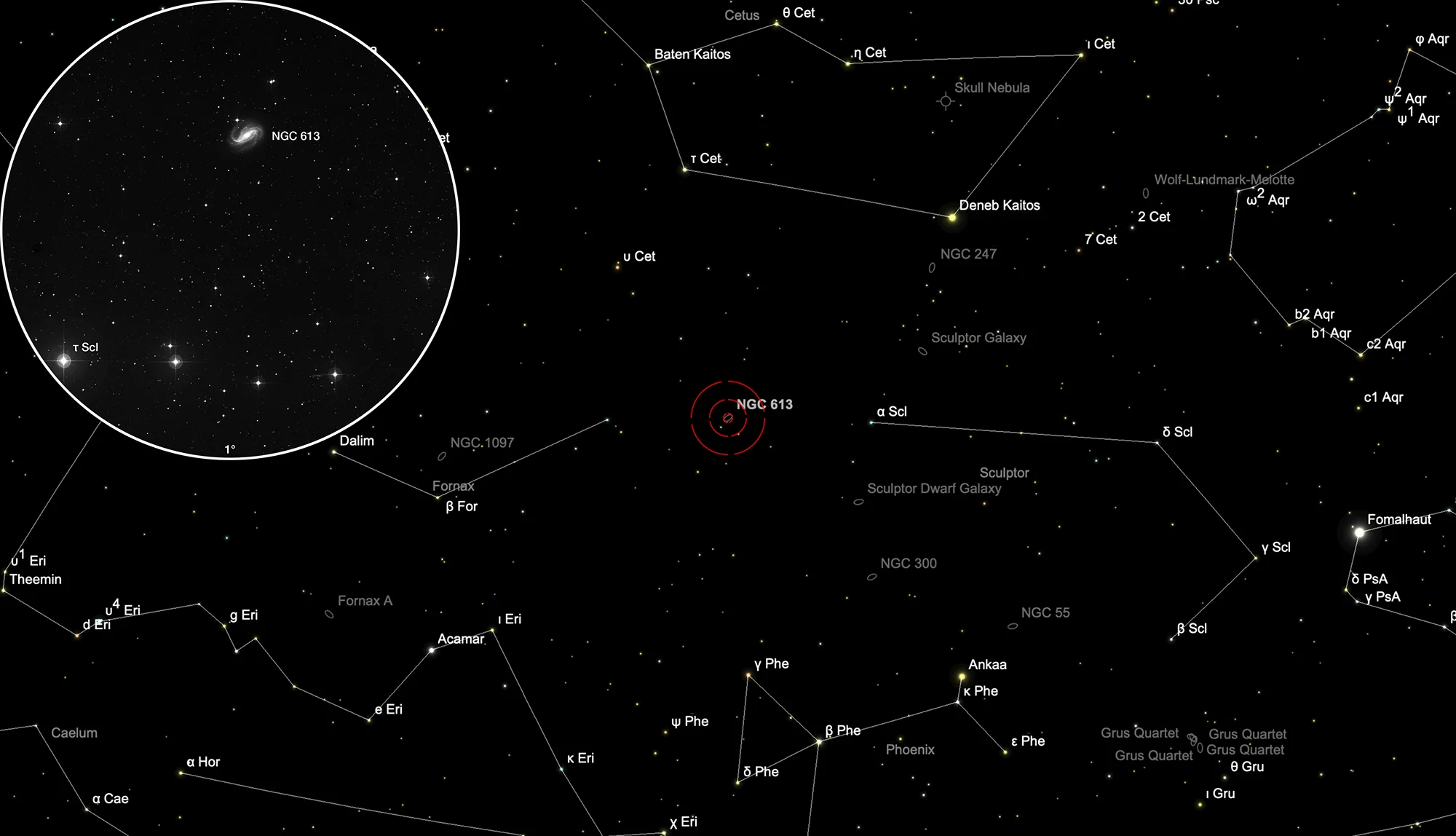Galaxy NGC 613

History
This galaxy was discovered by William Herschel on 9 December 1798 using his 18.7 inch reflector. He cataloged it as I 281 and noted: «Considerably bright, extended, north preceding, south following, having a nucleus in the middle, 6' long, 1.5' broad.» [465] Dreyer added the galaxy as NGC 613 to his «New General Catalogue» published in 1888. [313]
Physical Properties
| Designation | NGC 613 |
| Type | Gx (SBbc) |
| Right Ascension (J2000.0) | 01h 34m 18.4s |
| Declination (J2000.0) | -29° 25' 07" |
| Diameter | 5.5 × 4.2 arcmin |
| Photographic (blue) magnitude | 10.7 mag |
| Visual magnitude | 10.1 mag |
| Surface brightness | 13.3 mag·arcmin-2 |
| Position Angle | 120° |
| Redshift (z) | 0.004940 |
| Distance derived from z | 20.87 Mpc |
| Metric Distance | 25.130 Mpc |
| Dreyer Description | vB, vL, vmE 118°, sbM, * 10 nf |
| Identification, Remarks | WH I 281; h 139=2422; GC 361; ESO 413-11; MCG -5-4-44; VV 824; AM 0132-294; IRAS 01319-2940 |
Finder Chart
The galaxy NGC 613 lies in the constellation Sculptor deep in the south at a declination of about -29° nearby the 5.6 mag star τ Scl. This forms a horizontal chain with three other stars of seventh to eighth magnitude, which is conspicuous in a wide-field eyepiece with a field of view of at least 1°. North of it lies the galaxy. The best viewing time is June to March when it is highest above the southern horizon.
